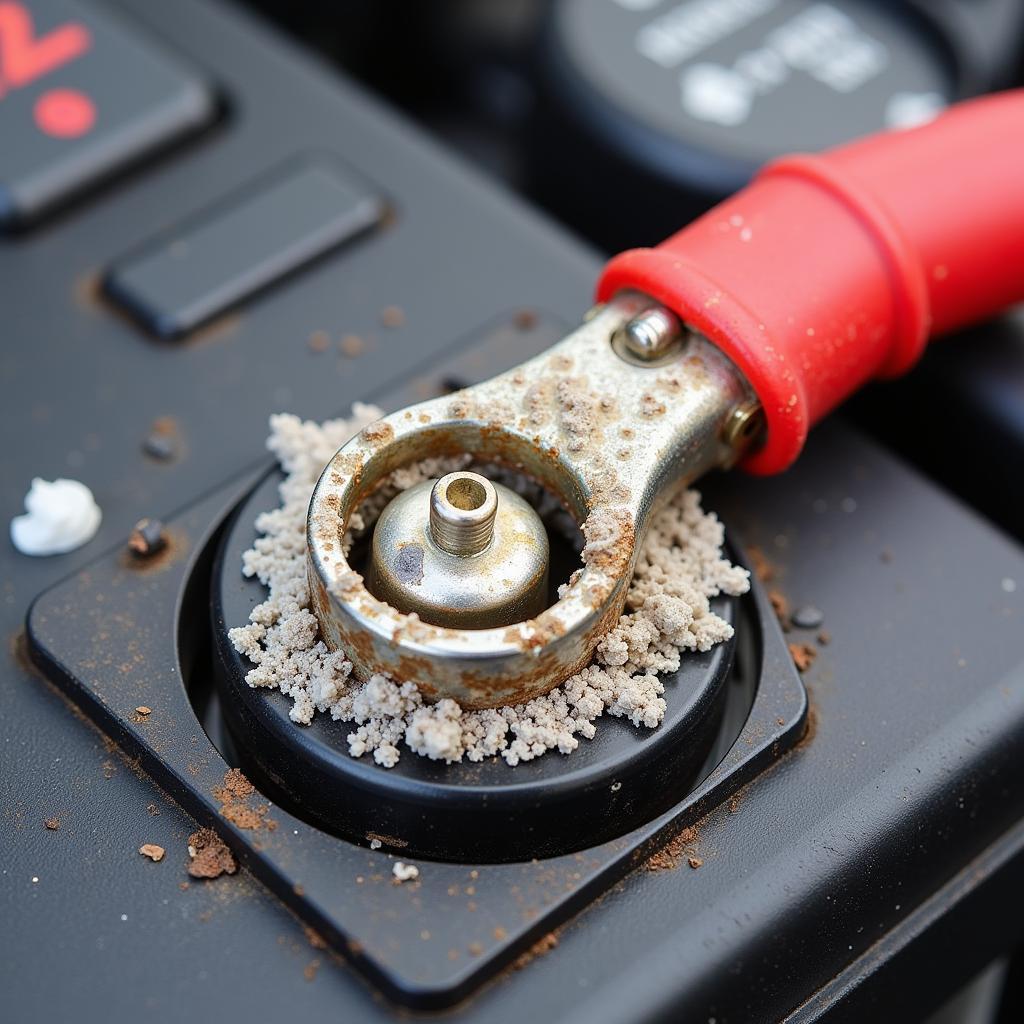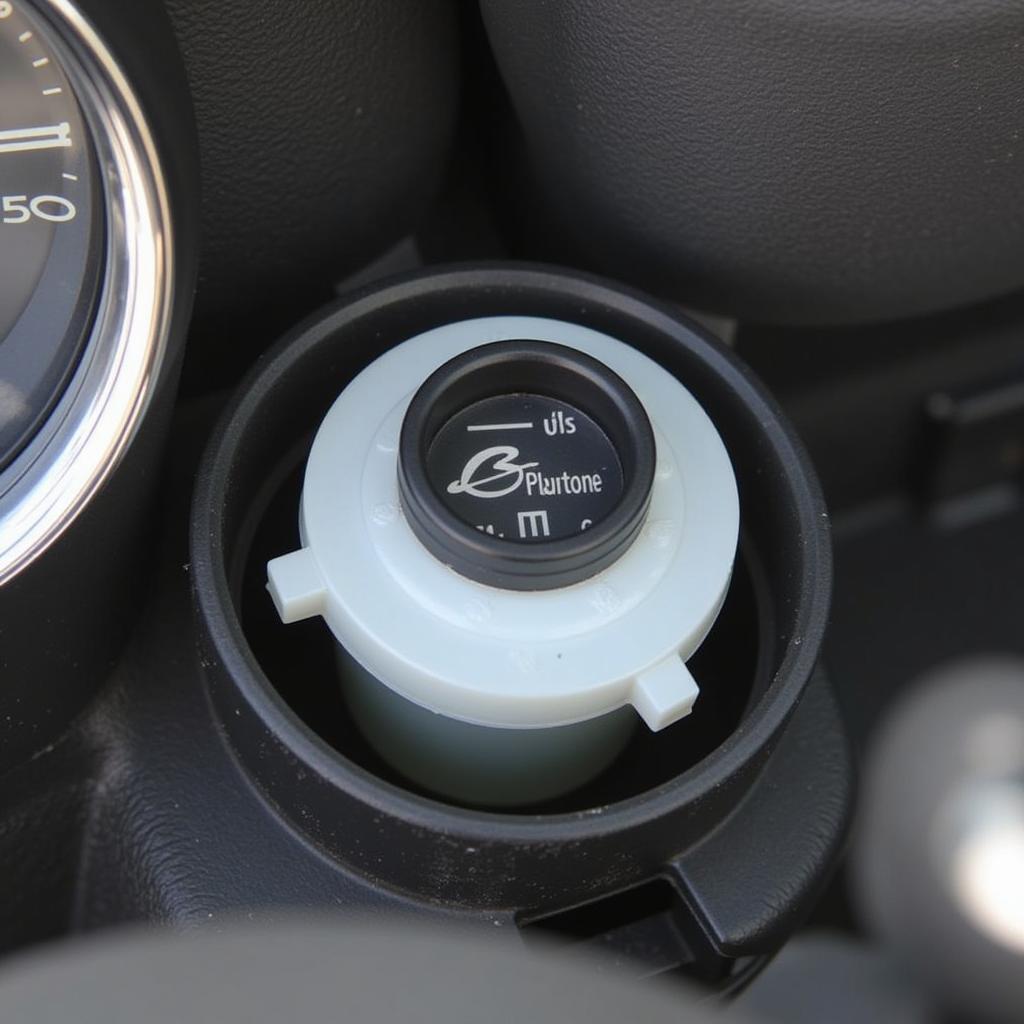A poor battery terminal connection can cause a surprising array of problems in your vehicle, from intermittent starting issues to complete electrical failure. This article will explore the causes, symptoms, and solutions for dealing with a poor battery terminal connection, empowering you to diagnose and fix this common automotive issue. low car battery symptoms
Identifying a Poor Battery Terminal Connection
Loose, corroded, or damaged battery terminals restrict the flow of electricity, leading to a range of frustrating symptoms. These can include dimming headlights, slow cranking, clicking sounds when starting, and even dashboard warning lights.
 Corroded car battery terminals close up
Corroded car battery terminals close up
What Causes Poor Battery Terminal Connections?
Several factors contribute to poor battery terminal connections. Corrosion, often a white, powdery substance, is a common culprit. It builds up over time due to a chemical reaction between the battery terminal and the surrounding air. Another cause is loose terminals, which can result from vibrations or improper installation. Damaged terminals, often caused by over-tightening or physical impact, can also disrupt the electrical flow. Extreme temperatures can exacerbate these issues, accelerating corrosion and weakening connections.
Troubleshooting a Poor Battery Terminal Connection
Before attempting any repairs, always disconnect the negative battery cable first for safety. Visually inspect the terminals for signs of corrosion, looseness, or damage. A loose connection can often be identified by simply wiggling the terminal clamps.
How to Test for a Poor Battery Terminal Connection
A multimeter can be used to accurately test for voltage drop across the terminals. Connect the multimeter leads to the battery posts and the terminal clamps, and then start the engine. A voltage drop of more than 0.5 volts indicates a poor connection.
Fixing a Poor Battery Terminal Connection
Cleaning corroded terminals is a relatively simple process. car battery damage symptoms] A mixture of baking soda and water can be applied to the terminals to neutralize the acid. A wire brush can then be used to remove the remaining corrosion. After cleaning, apply a protective coating to the terminals to prevent future corrosion.
Tightening Loose Battery Terminals
Tighten loose terminals using the appropriate wrench, ensuring a snug fit without over-tightening. Over-tightening can damage the terminals or the battery posts.
signs battery is going bad in car]
Replacing Damaged Battery Terminals
If the terminals are damaged, they should be replaced. This involves removing the old terminals and installing new ones, ensuring a secure connection.
“Regularly inspecting and cleaning your battery terminals is a simple yet crucial step in preventative car maintenance,” advises John Smith, Senior Automotive Technician at Smith Auto Repair. “It can save you a lot of headaches down the road.”
Preventing Future Problems
Regularly inspecting and cleaning your battery terminals can prevent future problems. A simple visual inspection every few months can identify potential issues early on. Applying a protective coating after cleaning can also help prevent corrosion.
jaguar f pace battery problems]
“Remember,” adds Sarah Jones, Electrical Systems Specialist at Jones Auto Electric, “a poor battery terminal connection can mimic other problems, so it’s always a good starting point when troubleshooting electrical issues in your car.”
In conclusion, a poor battery terminal connection is a common but easily fixable problem. By understanding the causes, symptoms, and solutions, you can keep your car running smoothly and avoid unexpected breakdowns. Regularly inspecting and cleaning your battery terminals is a small investment of time that can pay off big in the long run. Remember to always disconnect the negative battery cable first before working on the terminals.
FAQ
-
How often should I clean my battery terminals? Every few months is a good practice, especially in harsh climates.
-
Can I use something other than baking soda to clean the terminals? Yes, dedicated battery terminal cleaners are available.
-
What’s the best way to protect the terminals after cleaning? Dielectric grease or a battery terminal protector spray are effective.
-
How do I know if my terminals need to be replaced? If they are cracked, broken, or excessively corroded.
-
Can a poor battery terminal connection drain my battery? Yes, it can create a parasitic drain, slowly discharging the battery.
-
What if cleaning the terminals doesn’t solve the problem? There may be other underlying electrical issues requiring further diagnosis.
-
Can a poor battery terminal connection damage other car components? Yes, in extreme cases, it can strain the alternator and other electrical components.



